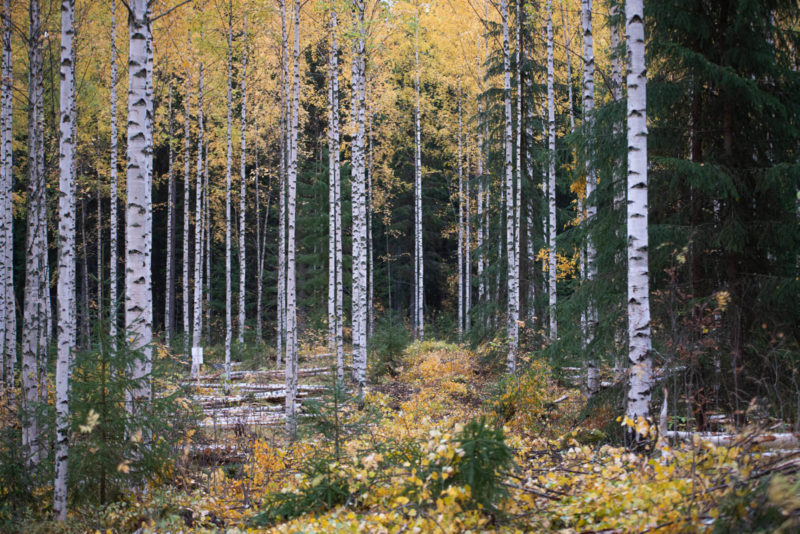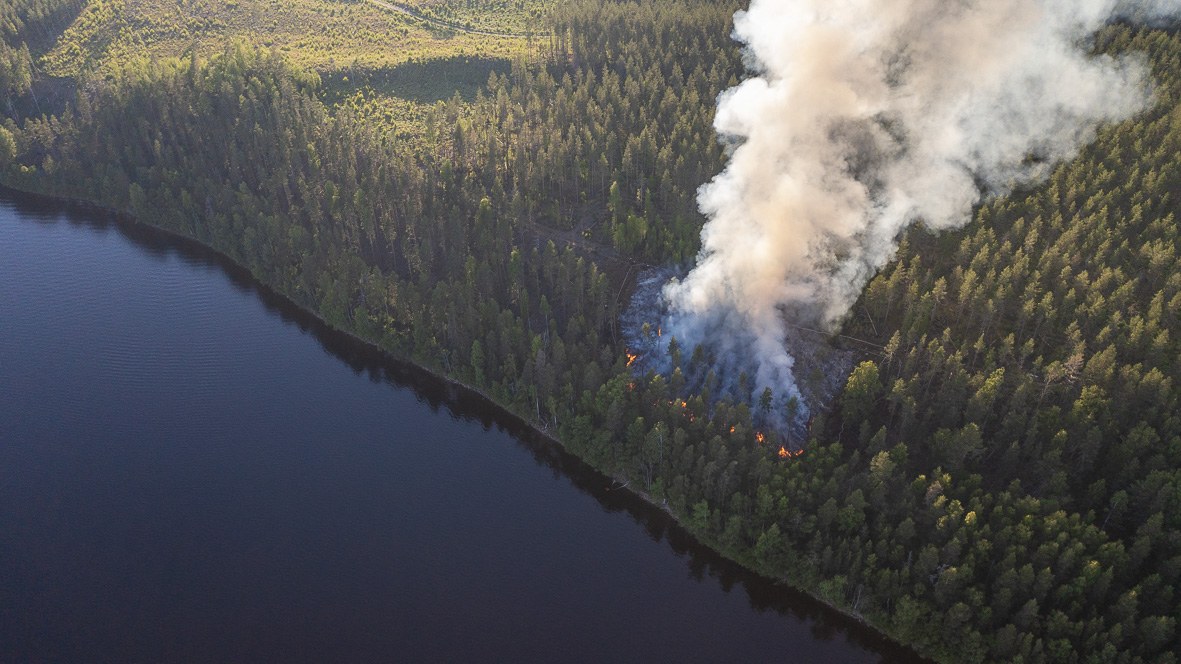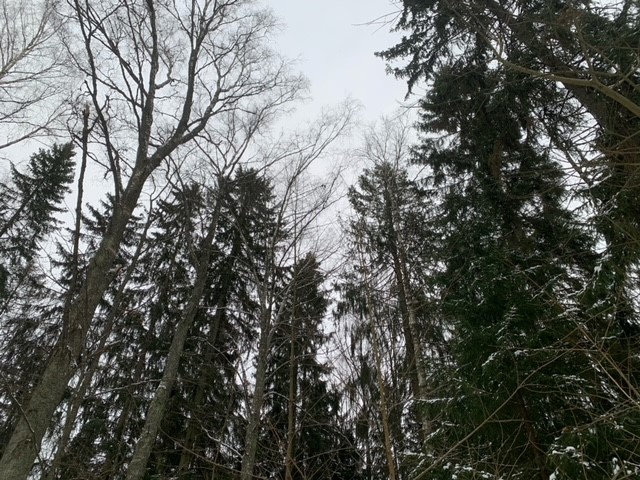See list: Six practical actions by forest companies to promote nature management in commercial forests

We listed six concrete nature management actions used by the forest companies Metsä Group, UPM and Stora Enso to improve the conditions in forests.
Nature management in commercial forests is important because most forests in Finland are managed for commercial purposes. We present six practical actions which the forest industry companies Metsä Group, UPM, and Stora Enso undertake to benefit nature.
1. Improving habitats of heat-seeking species
The forest management company Tornator and the forest industry company Stora Enso improved the environments required by heat-seeking species on the Huuhanranta site in Ruokolahti, Eastern Finland.
The species benefiting from the activity include, among others, spring pasqueflower, Breckland thyme, and sand pink. The methods used were controlled burning, thinning, and small-dimensioned clearcutting.
According to Heikki Myöhänen, Environmental Manager at Tornator, sites like Huuhanranta host seven percent of all threatened forest species in Finland.
’Managing hot, sunny sites can improve the conditions required by a wide range of species, and rather than money, you just use a chainsaw. The keyword is removal of trees. Add to that breaking of ground and controlled burning, and the result will be even better,’ Myöhänen says in a media release.
Insect species found on the hot and sunny Huuhanranta site include Platyrhinus resinosus, the fungus weevil Gonotropis dorsalis, Dicerca alni, Phytobaenus amabilis, Trixagus leseigneuri, and the hairy fungus beetle species Mycetophagus ater.

’Forest biodiversity and the range of forest species is being protected on conservation sites, but this is not enough on its own: we also need active and targeted measures in commercial forests – in other words, nature management,’ says Taru Timonen, Environment Manager at Stora Enso Finland’s Wood Procurement.
2. Continuous tree cover on peatlands
Metsä Group pays a better price for timber if the owner of a nutrient-rich peatland site chooses to manage it by preserving more cover. This is done by small-scale clearcutting or selection cutting.
In this management model, called Plus by Metsä Group, timber is grown on peatlands without interruption. The trees remove water from the soil, maintaining water tables that minimize emissions to air and water.
The company points out that clearcutting and the improvement of drainage on peatlands are the principal sources of environmental burden to waterways and climate caused by forestry.
In 2023, as much as roughly one quarter of the area of regeneration fellings undertaken by Metsä Group on peatlands used methods that preserve forest cover.
3. Habitats on mires are being restored
UPM aims at restoring a minimum of 3,000 hectares of mire habitats by 2030. The restoration measures are included in the company’s recent forest habitats programme.
’The focal forest habitats include different kinds of peatlands, small water bodies, groves [herb-rich forests], sunlit esker slopes, and burnt environments,’ says Tuomas Kara, Senior Environmental Manager at UPM Forest, in a media release.
Nature management will be carried out on a minimum of one hundred sites. The aim is to improve biodiversity in the company forests in Finland, to bring waterways closer to their natural state, and to support carbon sequestering.
The first site to be restored is the 170-hectare Sulkueenneva peatland in Virrat, about 300 kilometres north of Helsinki. An example of other measures taken by UPM is to increase the share of broadleaves in commercial forests to make them more like natural forests.
According to Kara, over 20,000 hectares have already been surveyed for potential sites to be restored.
’We want to do our part in halting the nature loss and to return areas utilized by the forest industry to their natural state,’ Kara notes.
4. Recommendation for sunny eskers
Metsä Group recommends that in managing sunny slopes of eskers which are potential habitats for heat-seeking species, nature management methods should be used. For the most representative sites on sunny slopes, the company recommends conservation.
The combined area of the most representative sunny habitats still left in Finland is only a few thousand hectares, while a wide range of threatened species live on these sites.
Forest-dominated sunny slopes are found on eskers facing south and west, where the soil often consists of sand and gravel. Growth conditions on such sites are warm and dry.
Sunny slopes are managed by, for example, breaking the ground and clearing excessive vegetation. The regeneration methods recommended by the company are seedling felling or small-scale clearcutting.
5. Controlled burning of forest in Central Finland
UPM carried out controlled burning in Muurame, Central Finland, to provide habitats for species that have lost ground in Finland.
Controlled burning refers to the intentional use of fire in the nature management of forests. It releases nutrients into the soil and gives space to new species, some of which are rare or threatened.
In Finland, wildfires are infrequent, which has led to the decline of species dependent on burnt wood.
The burning operation in Muurame was implemented as part of the UPM Nature Management Services entity launched last spring, which provides the forest owner with options to promote biodiversity.
In the case of controlled burning, UPM assists in site selection, applies for government funding, carries out the felling, and organizes the burning from setting the fire up to the follow-up extinguishing.
6. Fewer spruces are planted
In the future, Stora Enso will plant fewer spruces per hectare to improve forest biodiversity and vitality. The plan is to plant 1,600 spruce seedlings per hectare, instead of the previous 1,800.

This change will benefit endemic Finnish species, such as Scots pine and species of birch, helping them grow and survive among the spruce stand. A mixed forest improves biodiversity and is expected to withstand climate change, droughts, and storms better than stands consisting of mainly one species.
’Mixed forests are one solution to the challenges of climate change, as well as a practical step to improve biodiversity,’ says Antti Rantanen, Forest Service Manager at Stora Enso Finland’s Wood Procurement.
Read more: Forbes takes note of nature management measures by Finnish forest companies